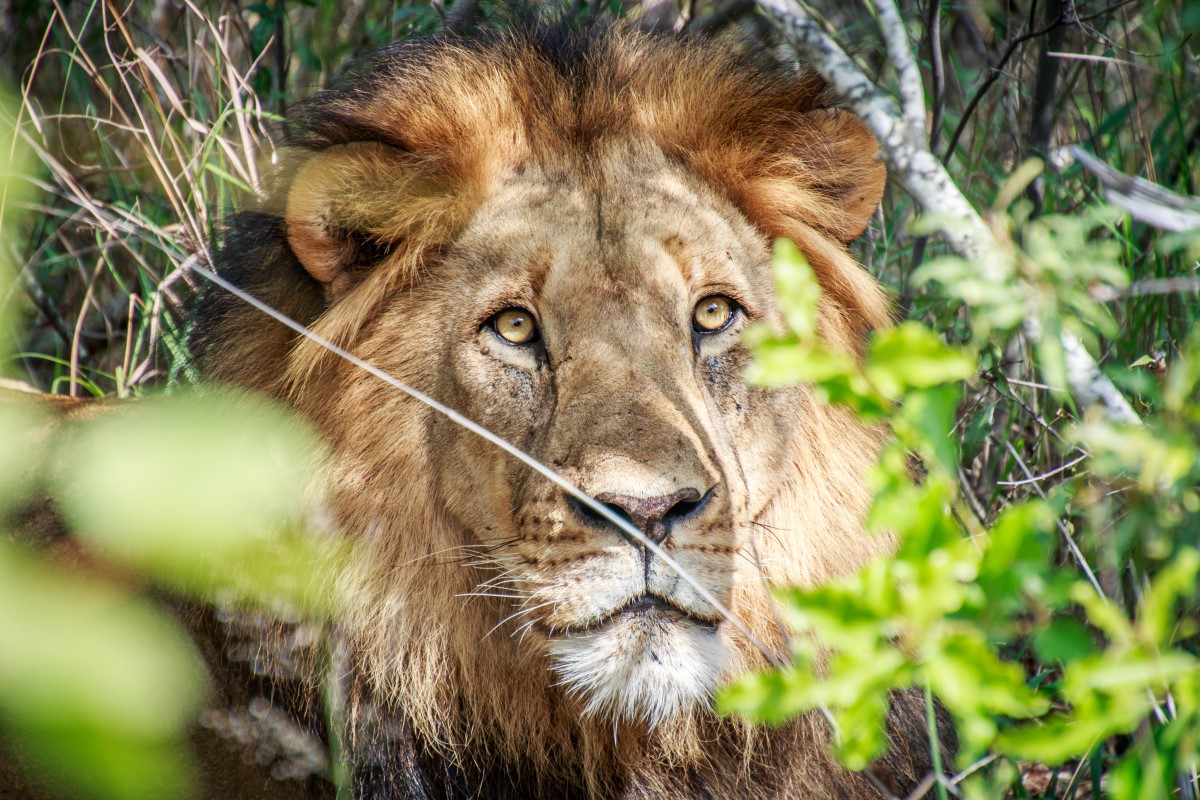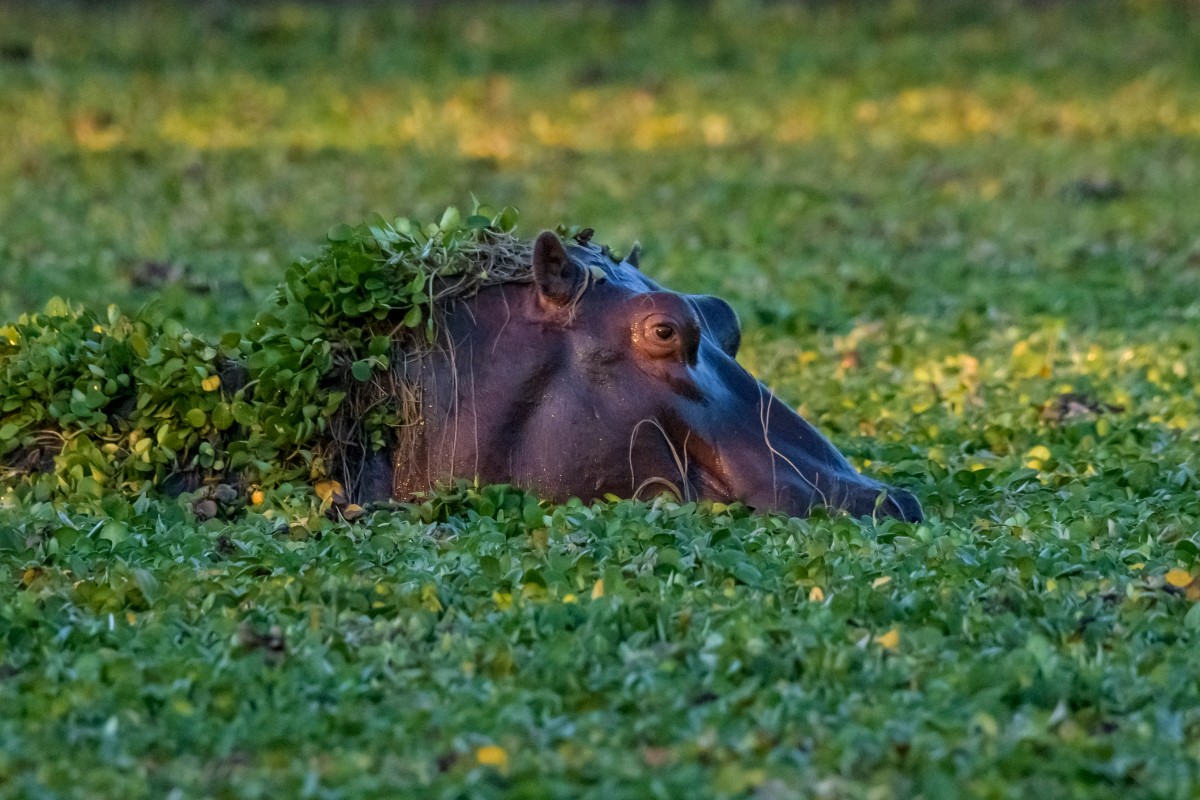Believe it or not, there are more wild animals in Southern Africa now than at any point in the last century, and ecotourism has played a major role in this incredible conservation success story.
Betting on the Big 5
Anyone who embarks on an African safari does so with the intention of catching a glimpse of the legendary Big 5: the elephant, lion, leopard, rhinoceros, and buffalo. But while you might think the term derives from the sheer size and magnetism of these species, the truth is more disturbing. The term ‘Big 5’ was first used in the 1890s by colonial hunters to refer to the five animals to fear the most. A false shot at a buffalo, rhino, or elephant typically resulted in a hunter being trampled to death. Being caught unawares by a lion or leopard could lead to an even gorier death.
But colonial hunters didn’t just coin the phrase, they very nearly wiped the Big 5 – and countless other species – off the planet. Paging through photos of early ‘hunting parties’, the terms ‘genocide’ and ‘massacre’ come most readily to mind.
Section Type: standardWidthImageS
James Stevenson-Hamilton was a key figure in establishing big game conservation projects in South Africa. (Photo: Wikimedia Commons)

When James Stevenson-Hamilton was appointed warden of the floundering Sabi Nature Reserve in north-eastern South Africa in 1902, he was struck by how few animals there were. Decades of hunting had left many iconic species on the verge of extinction. In the early years, Stevenson-Hamilton and his staff even contributed to the bloodshed, shooting any predator they encountered in a desperate attempt to save the antelope which he regarded as an African version of ‘the King’s game’. While this may seem bizarre to us now, we must remember that this was how wildlife management had always been done in feudal Europe: England’s last wolf is believed to have been killed, on royal orders, somewhere around the year 1500!
Only later did the idea of a functioning wild ecosystem with all predators and prey in balance begin to develop. In 1905 Stevenson-Hamilton became aware of the new American parks system, particularly Yellowstone; about which he read everything he could find. That was when he had, what we today would call, his light-bulb moment… But it was a hard road to convince others who could not understand why the government should spend thousands of pounds each year to protect game.
Stevenson-Hamilton did this, in part, by befriending key decisionmakers (most notably Prime Minister Jan Smuts). His policy of conserving the entire ecosystem, from the tiny plants and insects all the way up to the elephants and lions, soon paid dividends and the animals started to bounce back. When in 1923 the first tourist train completed a circuit of the Transvaal province, “nobody was more surprised than the systems manager of the railways when the game reserve turned out to be the highlight of the nine-day tour,” writes Bristow. In those first trips, the tourists never even got off the train, but soon camps and accommodation were established in the park.
Section Type: standardWidthImageS
In 2021, there are a staggering 40 times more large animals in South African than there were 60 years ago. (Photo: Amar Hussain)

Prime Minister Smuts’ defeat at the hands of Afrikaner nationalist JBM Hertzog in the 1924 general election seemed at first to be a severe blow to the conservation movement. But when someone suggested to Stevenson-Hamilton that he propose renaming the park after Afrikaner hero Paul Kruger, he suddenly found massive governmental support for his endeavors. How the world turns…
While South African politics of that era left much to be desired, you can’t really argue with the conservation numbers: there are now a staggering 40 times more large game animals in South Africa than there were 60 years ago!
South Africa’s three-legged stool
The Canadian wildlife biologist and researcher Shane Mahoney has written and lectured extensively on the North American Wildlife Conservation Model, and the enormous success it has enjoyed in rescuing and maintaining wildlife abundance in North America. At the “heart of the model is the concept that wildlife is owned by no one and is managed by government for the collective benefit of present and future generations.”
Just over 10 years ago, Mahoney became fascinated by the South African wildlife conservation success story which has achieved equally impressive results through entirely different means. Mahoney likens the model to a “robust and sturdy wooden stool [that] rests on three legs”: the public sector, the private sector, and the free market economy, which determines the economic value of wildlife.”
Section Type: standardWidthImageS
American author Ernest Hemingway posts with kudu and sable skulls while on safari in 1934. (Photo: JFK Library via Wikimedia Commons)

In South Africa there is a thriving (but strictly controlled) market for big game animals (and rare antelope species) with professional breeders selling stock to private ecotourism operators and owners of hunting concessions. While none of the parks SA Expeditions visits fall under this category (we only take travelers to the great wilderness areas which support self-sustaining wildlife populations – view our popular South Africa Safari & Wine itinerary here), the entire industry is propped up by the wildlife trade. The South African National Parks (SANParks) might not buy wildlife on the free market, but it does sell surplus animals to private sector clients.
Botswana’s community-based model
In Botswana, home to the spectacular Okavango Delta, and another of our preferred Southern African safari destinations, they do things slightly differently. Communities play more of a role than the private sector, and although there is no private breeding to speak of, it is interesting to note that controlled commercial hunting plays a part in their model too.
And the effects have been similarly impressive. Botswana’s elephant population has increased nearly tenfold since 1970 (interestingly, the numbers skyrocketed when controlled hunting was allowed before plateauing when an outright ban was enforced), according to the United Nations Environment Program, and rhinos have been brought back from the brink of extinction (it must be noted that many of these were brought from South Africa).
Section Type: standardWidthImageS
A handful of Botswana’s Okavango Delta residents enjoying an afternoon big-cat nap. (Photo: Birger Strahl)

Botswana – which is much drier and more sparsely populated than South Africa – has achieved great results with its high quality, low impact tourism model (i.e. focusing on the very top end of the market). This strategy has worked especially well in the magnificent Okavango Delta, a biodiversity gem which might have been ruined by mass tourism. After a slow and steady improvement over the last five decades or so, tourism is now the second biggest contributor to Botswana’s economy. Close to 40% of the country’s land area is set aside for conservation.
Another cornerstone of Botswana’s model is its focus on financially compensating the communities on whose land the lodges are situated. As the aptly-named Savannah Freemantle explains, “the Botswana tourism model involves two revenue streams, one for government and one for communities. At the start of each year, tourism companies pay their considerable annual lease fees [to communities which own the land]. Furthermore every company pays a further 16-18% of their annual turnover in the form of resource royalties, VAT, training levies etc.”
The other side of paradise
While South Africa and Botswana have both done a great job of bringing their wildlife back from the brink after the ravages of colonial hunting parties and plantation-style agriculture, there is still a dark side to conservation in both countries. Some in Botswana have called out the “underlying racism” of the high value, low volume model, describing it as “a government policy that deliberately but subtly excludes its own people.” It cannot be ignored that, across Africa, lodges are largely owned and frequented by white people but staffed by black people.
Section Type: standardWidthImageS
A Hollywood poster from 1922 depicting one of the early 20th century colonial hunting parties. (Photo: Wikimedia Commons)

If the racism of wildlife tourism in Botswana has been underlying, in South Africa it has been overt. Stevenson-Hamilton forced the black people who had been living in the area for centuries to make way for his national park. As Bristow explains, “Skukuza, the main rest camp in the Kruger Park, was the nickname given to Stevenson-Hamilton by those same people; it means ‘to sweep clean’.” This, coupled with the forced relocations and Bantustan policies of the apartheid government in the 1970s and 1980s, has made the areas on the fringes of the park some of the poorest in the country. (Guests who drive in to their lodge will note the contrast, but many fly in.)
But not moving the humans out of wilderness areas also has its pitfalls. In Botswana, where animals and humans share the same land, elephants have become a political hot potato because of the way they frequently destroy crops and kill villagers who are not allowed to defend themselves or their land.
It’s complicated
Of course it is! Tourism is always complicated, more so tourism to developing nations and fragile ecosystems. But at the same time, tourism is a major economic driver across Southern Africa and one of the biggest employers in the region. What’s more, numerous studies have shown that communities which are located near lodges enjoy better standards of living than those that aren’t. As a certified B Corp, SA Expeditions is a firm believer that ecotourism can be a force for tremendous good, and we focus on uplifting all of the players in our value chain.
Section Type: standardWidthImageS
Seeing spots in Kruger National Park, South Africa. (Courtesy Photo: Londolozi lodge)

We work with lodges which make uplifting communities and rebuilding habitats a priority. Dulini, one of our favorite Kruger lodges, is a shining example of the kind of transparent and honest approach which we favor. Dulini acknowledges that the communities its staff come from “rank among the most impoverished in the country”. And the lodge is doing something about it with a project which aims to provide sanitary wear to every pubescent girl in the area. (Across Africa, “period poverty” causes one in 10 girls to miss school every month.) Another of our Kruger faves, Londolozi, is well on the way to creating a futuristic African village powered by food gardens, sustainable tech, schools, clinics, and community spirit. And these are just two examples of the incredible things a new brand of tourism is doing for the region.
Section Type: cta
We urge you to visit Southern Africa in a manner that brings maximum value to the communities you visit and makes you a part of the solution. This starts with choosing a travel company and it ends with the choices you make while you’re on your safari adventure. Check out our most popular Southern Africa itineraries, or speak to a Destination Expert about curating the bespoke safari adventure of your dreams.

 Africa
Africa Africa
Africa